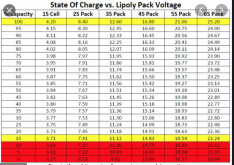SolarQueen
Making renewable do-able at www.alteStore.com
Lithium batteries are internally made up of multiple cells wired in series. So the internal cells are wired in series making the 12V battery, and then you are manually wiring the batteries in parallel.They are not wired in series, they are wired in parallel.



